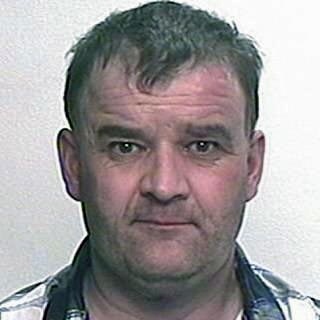The detective who played a leading role in capturing the killer of Jenny Methven is in no doubt the right man is behind bars.
Despite claims from William Kean’s family that his conviction for the murder of the elderly Perthshire woman is a miscarriage of justice, Detective Chief Inspector Colin Gall says the evidence against him is overwhelming.
Mr Gall (49) who led the murder inquiry for Tayside Police took time out from his holiday to give an exclusive interview to The Courier.
On Monday, Kean (46) was found guilty after a trial at the High Court in Glasgow of murdering Mrs Methven in her Forteviot cottage. He was sentenced to life in prison, with a recommendation that he serves at least 22 years.
Mr Gall said he “respected” the legal rights if an appeal is lodged, but stated he is adamant Kean murdered Mrs Methven with a blunt instrument.
“There’s absolutely no doubt in my mind that William Kean is the person responsible for the murder,” he said. “I’m confident that the murder inquiry will stand up to any appeal lodged.”
He added: “It was a ferocious attack and something that should never have happened to an 80-year-old woman living in her own house particularly within the environment of a community where you would feel safe. It appalled the nation.
“We gathered CCTV evidence, forensic evidence and evidence from witnesses of Kean’s movements that day. That provided us with corroboration of the fact that William Kean was responsible for the murder of Jenny Methven.”
Mr Gall said that a painstaking forensic search of Mrs Methven’s cottage and forensic evidence found on her body led the murder inquiry team to suspect Kean had carried out the murder.
“As a result of that we got the DNA evidence and fingerprint identification which was crucial to identify William Kean,” said the detective.
Mr Gall said Mrs Methven was a ”silent witness” who helped trap her killer.
He said her last phone call to her friend Elizabeth Cook proved to be vital in the murder inquiry. She cut the call short at 10.27am when she heard a vehicle in her driveway.
”Jenny herself was a silent witness to us, as this phone call told us when the vehicle reversed up the drive,” he said. ”Subsequent inquiries and facts led us to believe that that was the time Jenny was killed.”
Mr Gall said that forensic evidence was ”targeted” and desribed how officers checked each room of the rented cottage at Kildinny Farm using special laser equipment.
Forensic evidence on Mrs Methven’s body was also important to the case.
”As a result of that we got the DNA evidence and fingerprint identification, which was crucial to identifying William Kean,” added Mr Gall.
He continued: ”Jenny’s name will be remembered for a long time to come in Perthshire and further afield. When we released to Jenny’s family who was responsible for the murder it was a real shock to them.
”William Kean was convicted six months to the day of the murder. For everybody involved, it was the biggest inquiry we had ever been involved in. We had between 120-150 officers involved and everyone mucked in.”
